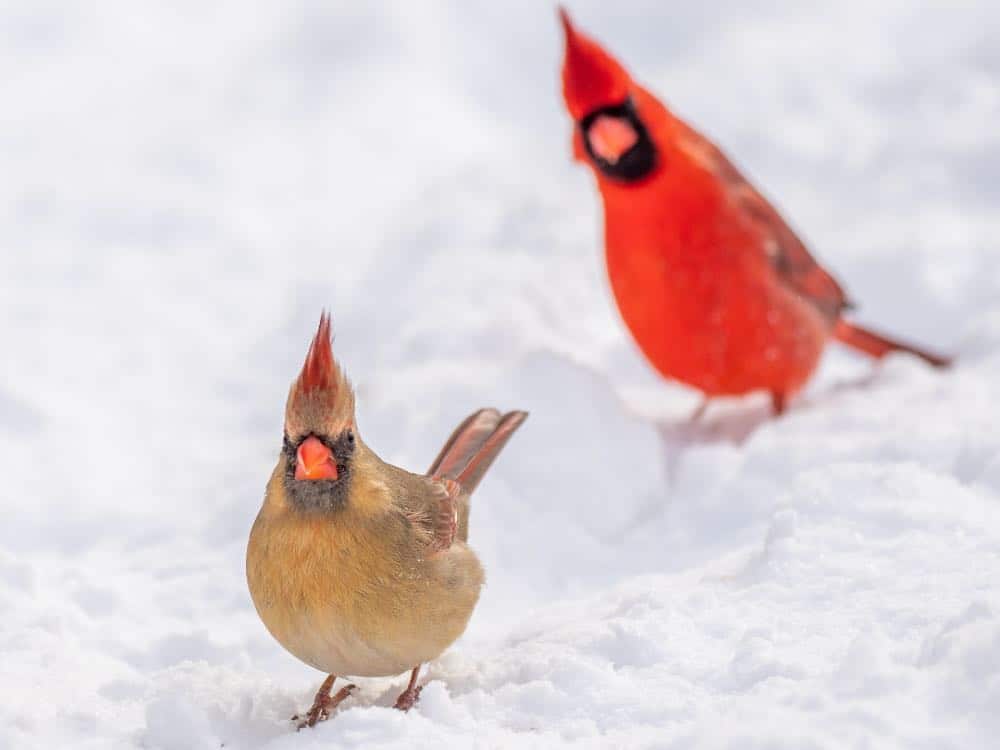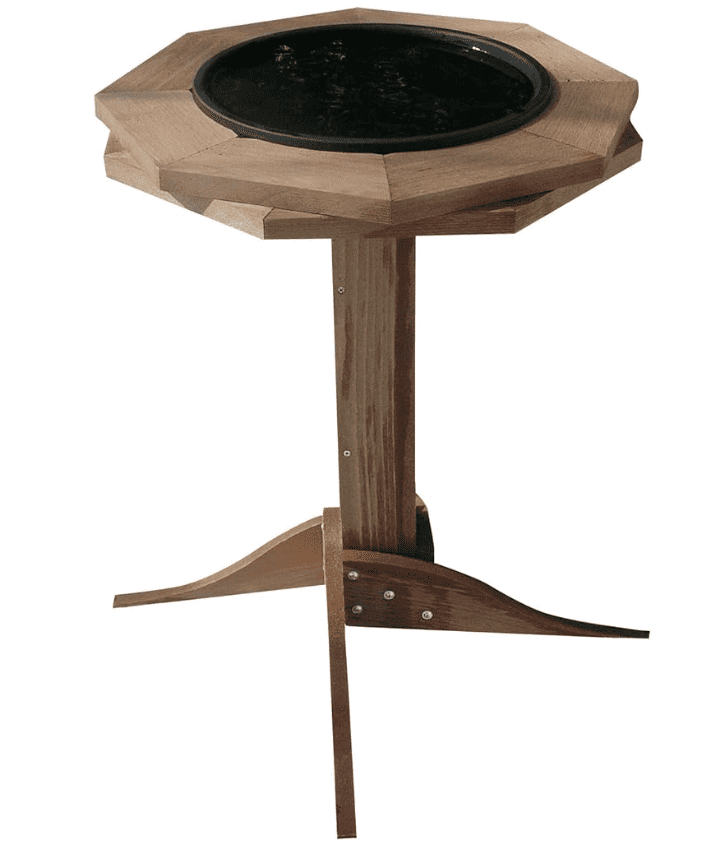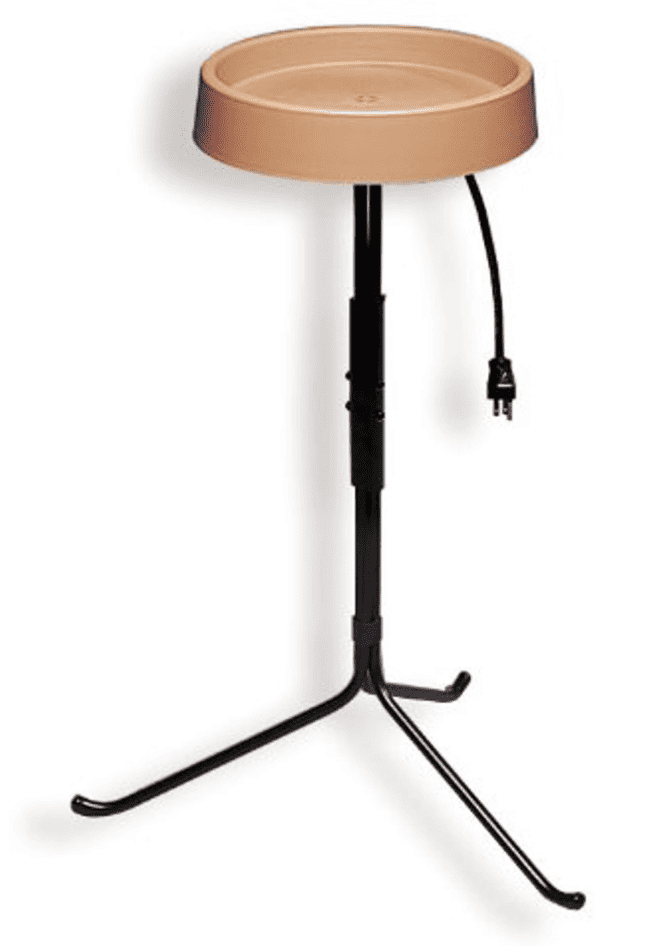How cardinals survive in winter, especially in the northern parts of their range, is truly amazing. Unlike many birds that fly south for the winter and enjoy balmy temperatures, cardinals are year-round birds. Because they stay in their range through winter they’ve developed adaptations to stay alive even in the harshest conditions.
When the temps get frigid and natural food sources scarce they are challenged but manage to survive by affecting their own body temperature and energy usage. In this article, I’ll explain these natural survival mechanisms and provide tips on how you can help them during this time.
I’ve been attracting cardinals to my backyard for over 26 years. (The proper name for this wild bird species is northern cardinal but many still know them as cardinals.)
I live in Wisconsin, one of the northernmost parts of their region, and can tell you firsthand the winters can be harsh. Freezing cold winds and sub-zero temps are not uncommon between December and February.
I’ve combined my experience with the expertise of Gary Ritchison, biologist and author of Northern Cardinal, to explain how cardinals manage to survive in winter.
Do Cardinals Migrate?
No, cardinals do not migrate. In the winter, they remain in their year-round range including the US, east of the Great Plains, and parts of Mexico.
When mating season is over in the fall, male and female cardinals relax their territorial obsession and get ready for the winter months.
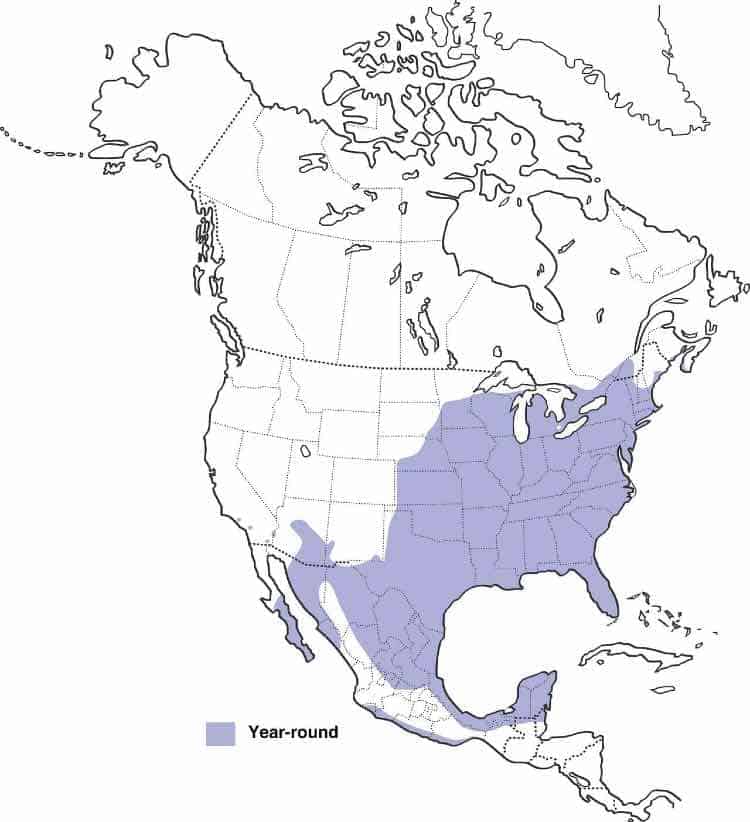
How cardinals stay warm
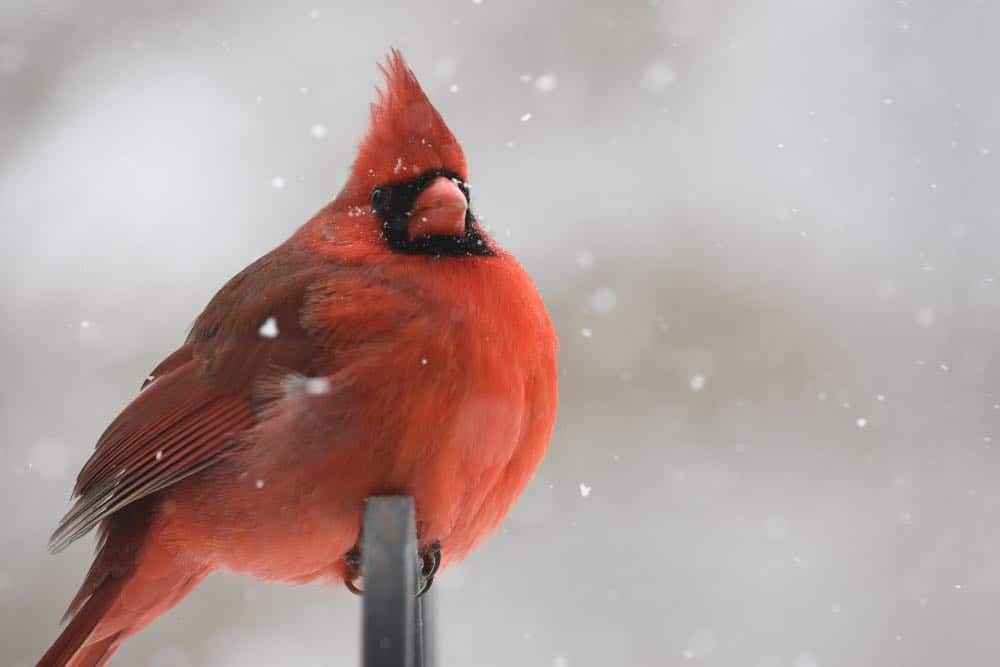
Like all warm-blooded animals, cardinals need to maintain a certain body temperature which requires energy. For northern cardinals, this is 105° – 108° F.
A lot of energy is needed during winter to maintain this temperature so one of their primary goals is to conserve energy and stay warm any way they can.
How Cardinals Stay Warm When It’s Above 64° F
When the outdoor temperature is 64° F or above, cardinals expend very little energy so are able to control their own body temperature in several ways. They control body temp by changing feather positions, fluffing their feathers, changing the direction of blood flow, and seeking out shelter.
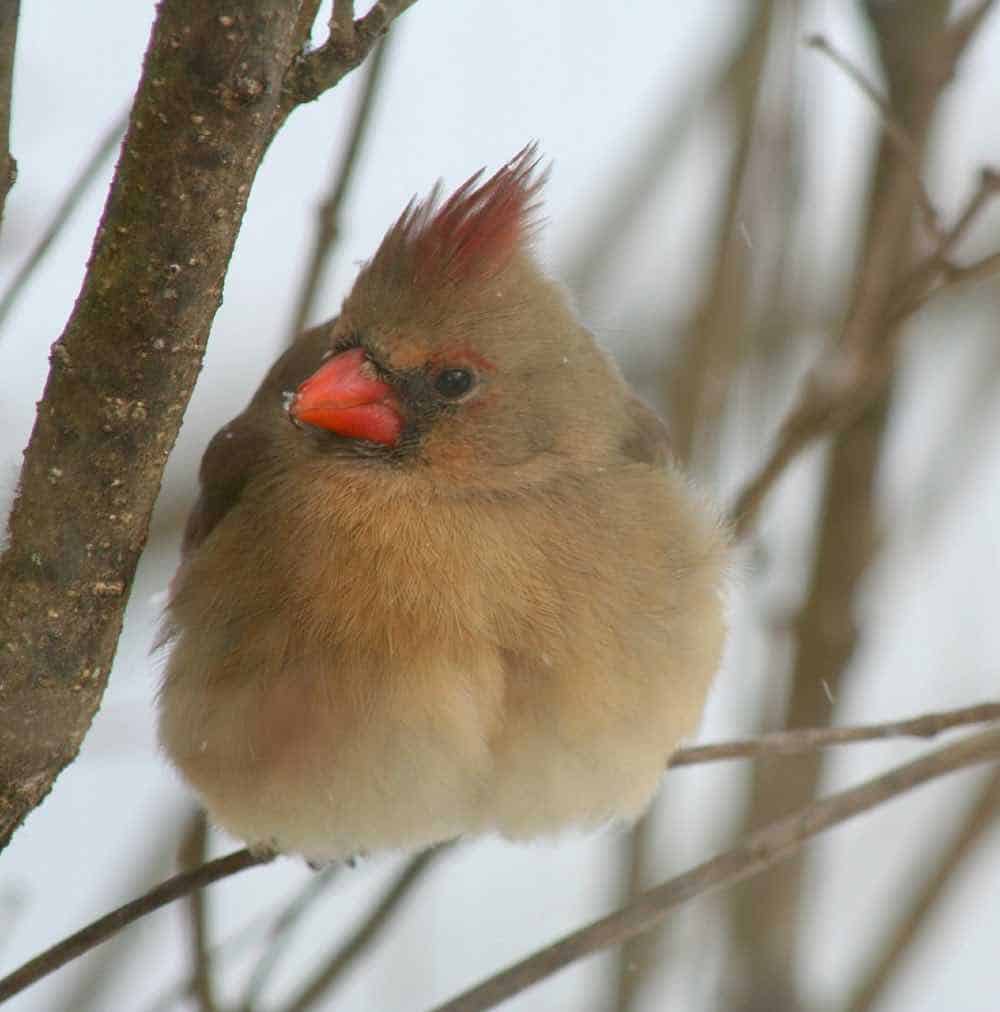
Cardinals will fluff their feathers creating pockets of trapped body heat. The more they fluff, the warmer they are.
Northern cardinals are able to control their blood flow by moving it away from the surface of their body thus limiting heat loss.
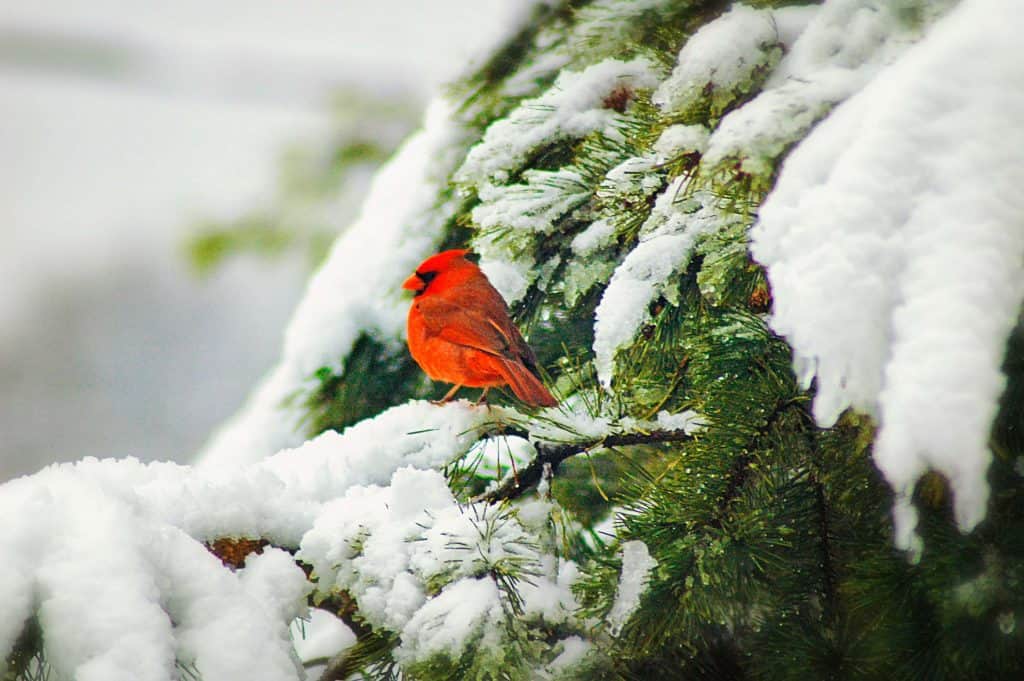
Many birds will seek shelter in a cavity like a hole in a tree or a manmade birdhouse/nesting/roosting box. Cardinals are not cavity nesters so won’t use any of these for shelter. Instead, they seek out dense areas of evergreen trees to hunker down and roost.
How Cardinals Stay Warm When It’s Below 64° F
When the temperature is 63° F or lower, cardinals have to resort to more drastic measures which require even more energy expenditure. These techniques include shivering and adjusting body temp.
Many wild birds, including northern cardinals, will shiver to stay warm. They do this by tensing their muscles, especially breast and leg muscles, which create heat and appear to us as if they’re shivering. This method of staying warm also expends a lot of energy so is reserved only for desperate times.
Cardinals have the ability to drop their body temperature by 3-6° if needed. In dire conditions, they may need to resort to dropping their temperature in order to survive.
How you can help Cardinals stay warm in winter
- Plant an area of dense conifer trees (evergreens, cedars, pines) they can hunker down in and protect them from arctic winds.
- After Christmas, rather than toss your Christmas tree to the curb, place it in the yard as an added shelter site. It’s not quite a dense area of trees but can help.
Why You Should Feed Cardinals in winter
Feeding cardinals in the winter is an essential activity, especially for those of us up north. For one, we’re helping them more easily find food.
For another (somewhat selfish reason), we’re surrounded by sheets of white snow and gray skies for months at a time, and seeing the brilliant red plumage of the male cardinal now and again keeps our spirits up!
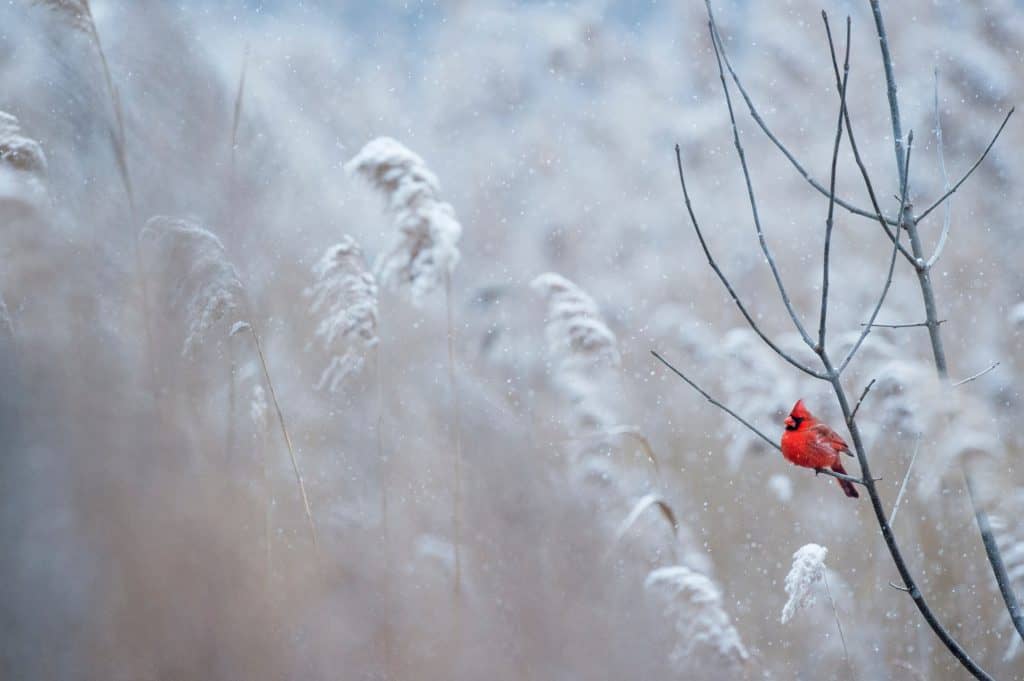
Feeding in winter is more than just hanging a bird feeder out. Wintertime presents certain challenges to wild birds, northern cardinals are no different. Adjusting to their wintertime dietary needs increases your chances of being the popular bird feeder in town for this famous red bird and may be the difference between surviving or not.
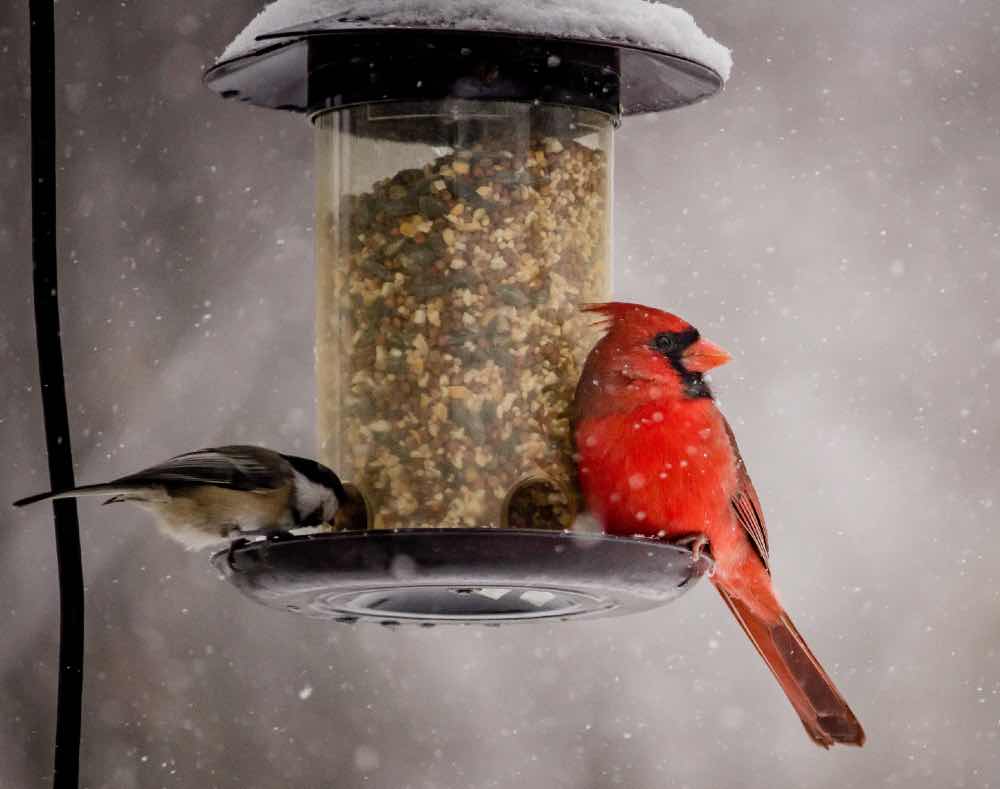
The cardinal’s caloric requirements are higher in winter because they expend a ton of calories just trying to keep warm (maintaining body temp, fluffing feathers, shivering, etc.) The colder it is the more energy they use.
Also, since food in the wild is in short supply during the winter, they spend more time & calories foraging for it. By providing bird feeder food for cardinals to eat you are doing them a great service, allowing them to conserve some of that energy by not having to travel so far to find it.
Best Food to Feed Cardinals in Winter for Survival
In order to supply the calories cardinals need to stay warm and survive the winter, you should offer high-calorie food at the bird feeder. The bird feeder fare that northern cardinals love and contain high fat are listed in the table below along with the respective fat content. The higher the fat the better.
| Food | Fat Content* |
|---|---|
| Black-Oil Sunflower Seeds | 30% * |
| Safflower Seeds | 30% * |
| Peanuts (Hulled & Unsalted) | 45% * |
| Suet Cake | 25 – 95% (depending on contents) |
| Suet (Pure beef or pork fat) | 100% |
| Seed Mix | 10 – 50% |
Seed mixes are a great option as well. They appeal to a wide variety of wild birds including the cardinal.
Just make sure the contents include at least some of the high-fat bird feeder foods mentioned above.
How to Feed Cardinals in Winter
Cardinals are primarily ground foragers. During spring, summer, and fall it’s not a problem for them to hop around the ground looking for food to eat but when the ground is covered with snow it becomes a challenge – especially if the snow is deep.
Shovel a small area and scatter black oil sunflower seeds, safflower seeds, hulled peanuts, and/or chopped suet on the ground each day for them to forage.
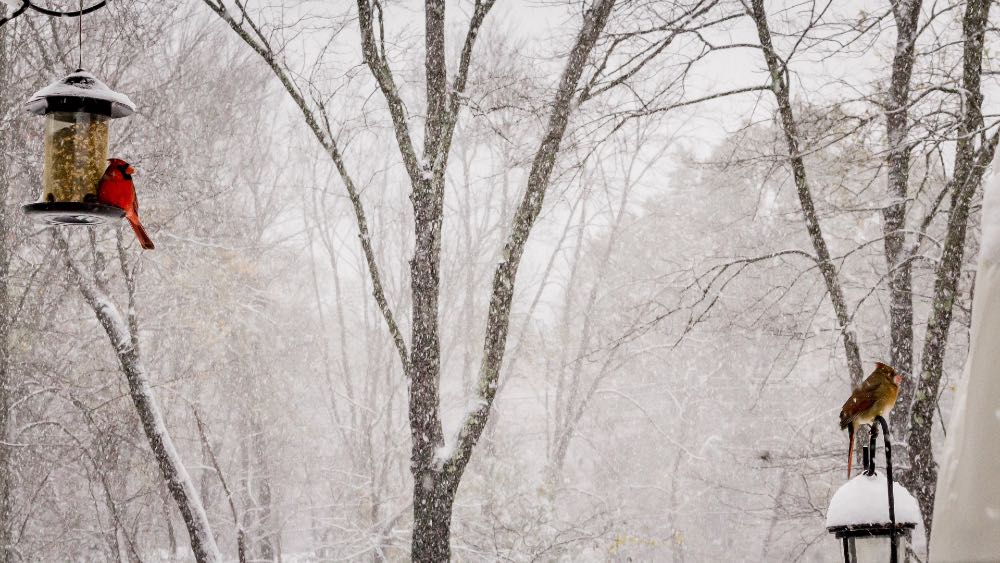
Many a cardinal has been known to visit a bird feeder. So, although they are primarily foragers they are open to visiting feeders. Provide seeds in a bird feeder and they will enjoy it too. Suet is best offered to cardinals chopped on a tray or platform-style bird feeder.
I love the Droll Yankees Dorothy platform feeder wintertime – it offers protection from the snow and the space cardinals need to perch.
Once you commit to feeding wild birds in winter you’ll find they come to expect it. It’s desperate times, you know!
Be sure to keep the cardinal feeders stocked and free of ice and snow, especially after a long storm in which they’ve been hunkered down for an extended period of time and will be hungry.
Special Wintertime Treat
During the spring and summer, the primary source of food for northern cardinals is insects, spiders, centipedes, snails, and slugs. If you want to provide them with a special, super-enticing treat you can offer mealworms. (Maybe on Christmas Day 🙂
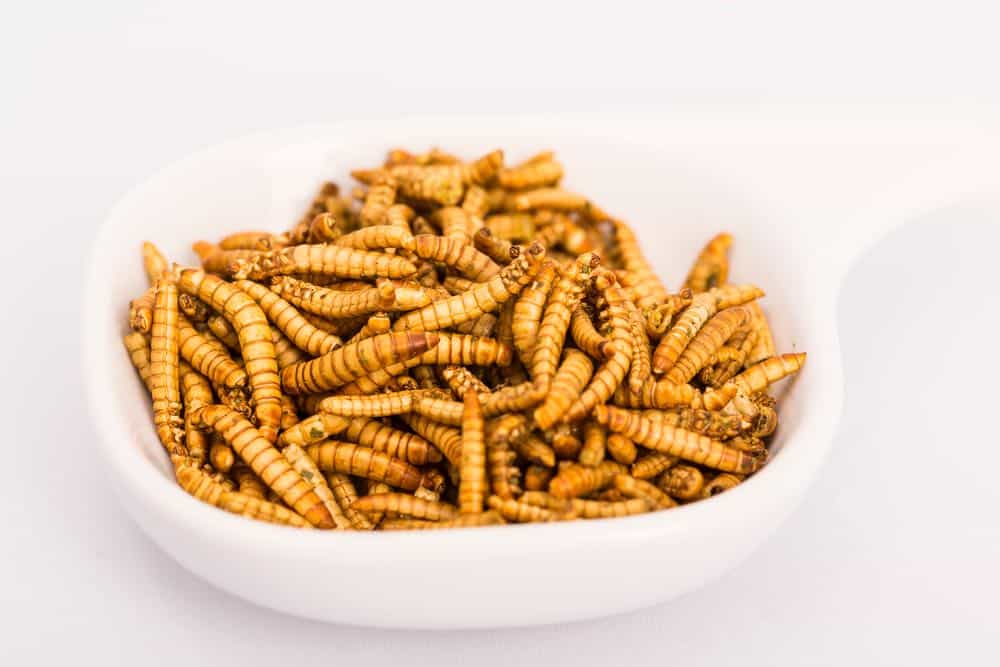
Live mealworms will get their attention faster and should be put out in a dish with sides as they try to climb out. dehydrated mealworms are the next best thing and cardinals will appreciate them as well.
Offering Cardinals Water in Winter is Essential
Without question, if you want to attract cardinals in the winter you need to have water available for them. They need water to drink and bathe year-round, especially during the winter when they’re surrounded by frozen lakes, streams, and ponds.
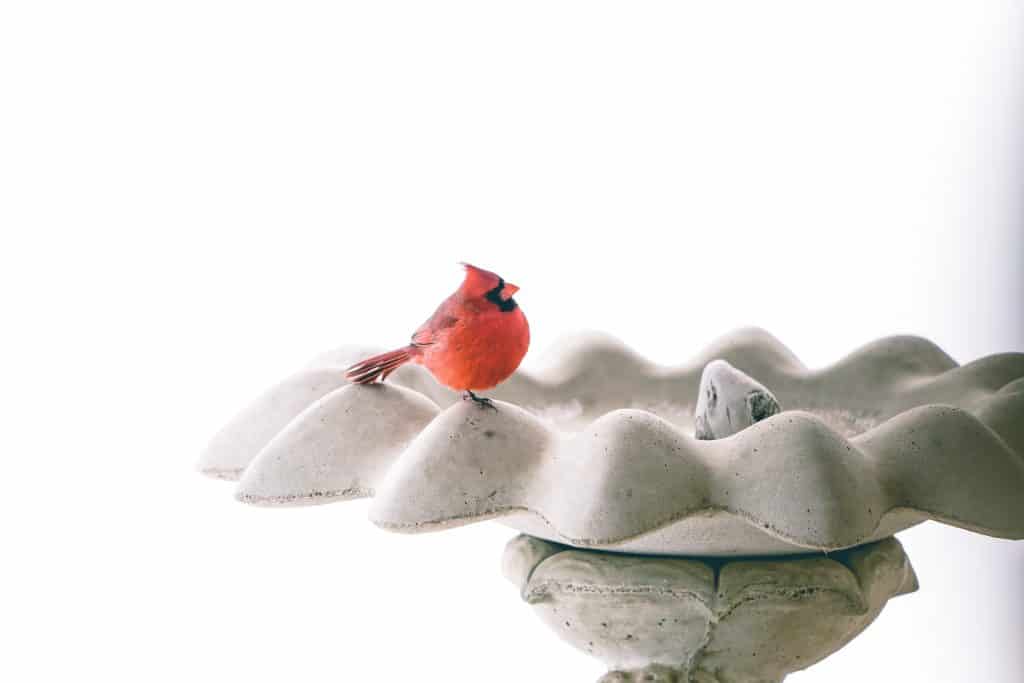
Depending on where you are in their range, you may get away with filling a birdbath each day with fresh water. The further north you head the less practical this becomes and a heated birdbath is the perfect device to prevent the water from icing up.
You can find heated birdbath heaters just about anywhere. They’re relatively inexpensive and as I mentioned, the key to keeping the cardinals around in winter.
Don’t waste your money on a crappy heated birdbath. Instead, get one that is guaranteed to do the job and do it safely. Check out one of the following heated birdbaths I recommend:
Do All Cardinals Survive The Winter?
Although there are no statistics specific to how many northern cardinals survive the winter we do know adult cardinals have a survival rate of 60% from one year to another. One can surmise a significant number of those who did not survive perished during winter. After all, Mother Nature has ideas of her own and we can’t feed them all.
It’s Up To You
I don’t know about you, but when the temps are below 30°F the last place I want to be is outside – for extended periods of time. Imagine being a cardinal in winter where every day is cold and some days downright arctic. Help a bird out and provide food and water. You just may be the reason one more red bird was able to survive the winter.
Sources
Ritchison, G. 1997. Wild Bird Guides: Northern Cardinal. Stackpole Books, Mechanicsburg, PA

